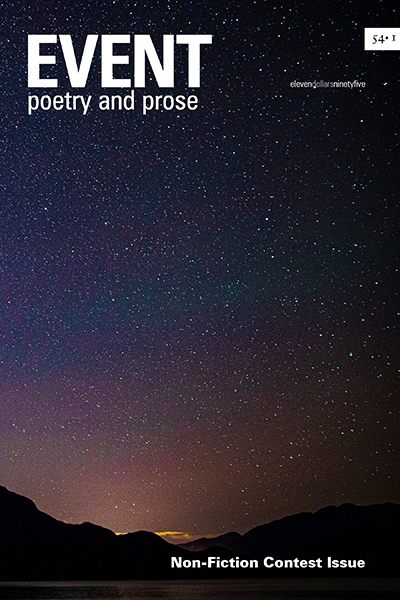Sarah Moar Reviews Non-Fiction From Brittany Luby and Jenna Butler for EVENT 50/1

Sarah Moar Reviews:
Brittany Luby, Dammed: The Politics of Loss and Survival in Anishinaabe Territory, University of Manitoba Press, 2020
Jenna Butler, Revery: A Year of Bees, Wolsak & Wynn Publishers, 2020
In her scholarly local history of what is known in settler-colonial parlance as Northwestern Ontario’s Lake of the Woods region, University of Guelph professor Brittany Luby aims to reposition the lens through which Canadian histories are generally told. She does this by telling the region’s economic story from the point of view of the land’s first inhabitants, rather than from that of the settler-colonists. Not only does this recentred focus add previously ignored and thus ‘new’ information to the familiar story of post-1945 Canadian economic prosperity, it also fundamentally shifts the narrative by showing exactly how that settler-colonial prosperity was gained at the expense of the region’s Indigenous people. Through a meticulously detailed account explained in lucid, equable prose, Luby fully achieves her dual purpose. First, she disrupts the popular narrative in order to show how ‘Endemic poverty on reserves resulted from federal and provincial postwar policies undertaken for the “common good.”’ Secondly, she testifies to the continued strength, adaptability and sophistication of the region’s Anishinaabe people in their attempts to survive the effects of colonialism.
By combining a thorough examination of a wide variety of archival sources with a careful and respectful attention to oral testimony from local inhabitants of the region and her own lived experience, Luby presents the reader with an erudite, but eminently readable, account of the last hundred or so years of human interaction with, and manipulation of, the waterways of Northwestern Ontario. In addition to employing ‘a visual reorientation’ that centres on the land and its people, Luby also includes among her chosen set of methodologies a ‘presence-ing,’ a form of ‘relationship building, which depends on careful attention over time,’ something she considers ‘essential to constructing a culturally relevant and appropriate telling of environmental and social changes.’
The book’s six chapters, interspersed with fascinating maps and photos, tell the story in linear chronological fashion, as is the norm for Western historical accounts, seamlessly combining, comparing and contrasting the various Anishinaabe and settler-colonial perspectives. Whether these be from local newspaper accounts, government and business reports and correspondence, or transcribed interviews with Anishinaabe Elders, Luby’s judicious presentation of the evidence guides the reader through what she calls the ‘crossing points’ of a plurality of truths about the region’s history.
This ability to tell an Anishinaabe-centred history in a form that is familiar to Western scholarship traditions, while being carefully respectful of Anishinaabe ways, is one of the book’s main strengths. As a white settler living on traditional Nehiyaw and Métis lands, I find it increasingly unsettling how little I know of the place in which I make my home and of the histories of my Indigenous neighbours, even with my avid interest in history. I am grateful to Luby for her skill at weaving together archival material with Indigenous knowledge and perspectives in an accessible and compelling way.
Another aspect of Luby’s book that I admire is her explicit awareness of the rhetorical nature of language choices. ‘Language is a slippery thing,’ she reminds us as she proceeds to analyze the ‘language of possibility’ in the communications between the Ontario-Minnesota Pulp and Paper Company and the Hydro-Electric Power Commission of Ontario (HEPCO) in order to show how the interests of one sometimes overlapped with, sometimes conflicted with, and occasionally circumscribed the interests of the other.
Finally, a third and deeply compelling strength of the book is the wealth of knowledge it offers readers about the region’s waterways and their non-human inhabitants. Especially during this time of COVID-19 restrictions, when we spend our days glued to screens, the opportunity to learn more about, for example, the fish, aquatic mammals, plants and ice formations in landscapes near us feels wonderfully relevant and refreshing.
In her foreword to the book, Chief Lorraine Cobiness of the Niisaachewan Anishinaabe Nation states:
We have a lot of work to do as Canadian and Anishinaabe adults. We are role models for the youth. We must teach our children how past decisions shape people’s lives and possibilities today. This book is a start.
I couldn’t agree more. And what better way to teach children how to live together equitably in society than by demonstrating how to carefully examine the events of the past from a plurality of perspectives, as Luby does here? My hope is that she continues with this project, perhaps by turning this scholarly account of the region’s history into a version more accessible for younger students and their educators. I am envisioning a graphic novel version accompanied by a toolkit of maps, diagrams and excerpts from archived and transcribed correspondences, for example, that could be part of an interdisciplinary lesson in schools. Regardless of where she next focuses her considerable historian’s skills, it is clear that with this book, Luby has achieved her hope: that its readers will go on to question the accepted narrative regarding how economic prosperity in this country got to be so shamefully lopsided.
Jenna Butler penned Revery: A Year of Bees in order to create and sustain hope in the face of catastrophic climate change, among other human-caused ills; she has succeeded beautifully. Astutely perceiving that ‘we find in ourselves a deeper necessity for a craft that allows us to look at the world around us with that vanishing and vital sense of wonder,’ Butler uses her skills as a writer and teacher to show and tell the ways in which beekeeping is an act of hope.
Arranged into 11 chapters that provide glimpses into the most significant moments in the year of a Northern Albertan beekeeper, Butler’s book reads like a cross between a collection of essays and a naturalist’s journal, containing the attentiveness of a love letter and the wistfulness of an elegy. Weaving together salient facts from Alberta’s history, economics, demographics and, especially, ecology, Revery informs as often as it inspires. Did you know that Alberta is ‘home to at least 320 confirmed species of wild bees’? And that some of these go by the adorable monikers (to me, anyway) of ‘sweat bee,’ ‘squash bee’ and ‘Megabombus’? And how about that ‘frigid bumblebee,’ who likes to ‘dangle from the lungwort’s blue baubles like the clappers in very small bells’ and can hold or release its internal body heat to keep its mates alive through harsh Albertan winters? Vital sense of wonder, indeed.
Read this book to discover for yourself the fascination of the honeybee superorganism and the surprising ways humans can live in relation to a hive. One small warning: There’s a part near the end of the book where Butler describes the extent to which bees are in danger. All three times I read the book, I’ve found myself weeping, even with the always present knowledge of the harm we are doing to life on Earth. By the time I arrive at this point in the book, I’ve had such a sweet taste of what it means to live with this ‘increased awareness of place,’ as Butler puts it—carried along in this revery of a year lived with humility and wonder on a Northern Alberta farm—that I find myself sorely grieved by its potential loss. But then I go back, and read it again.
—Sarah Moar













